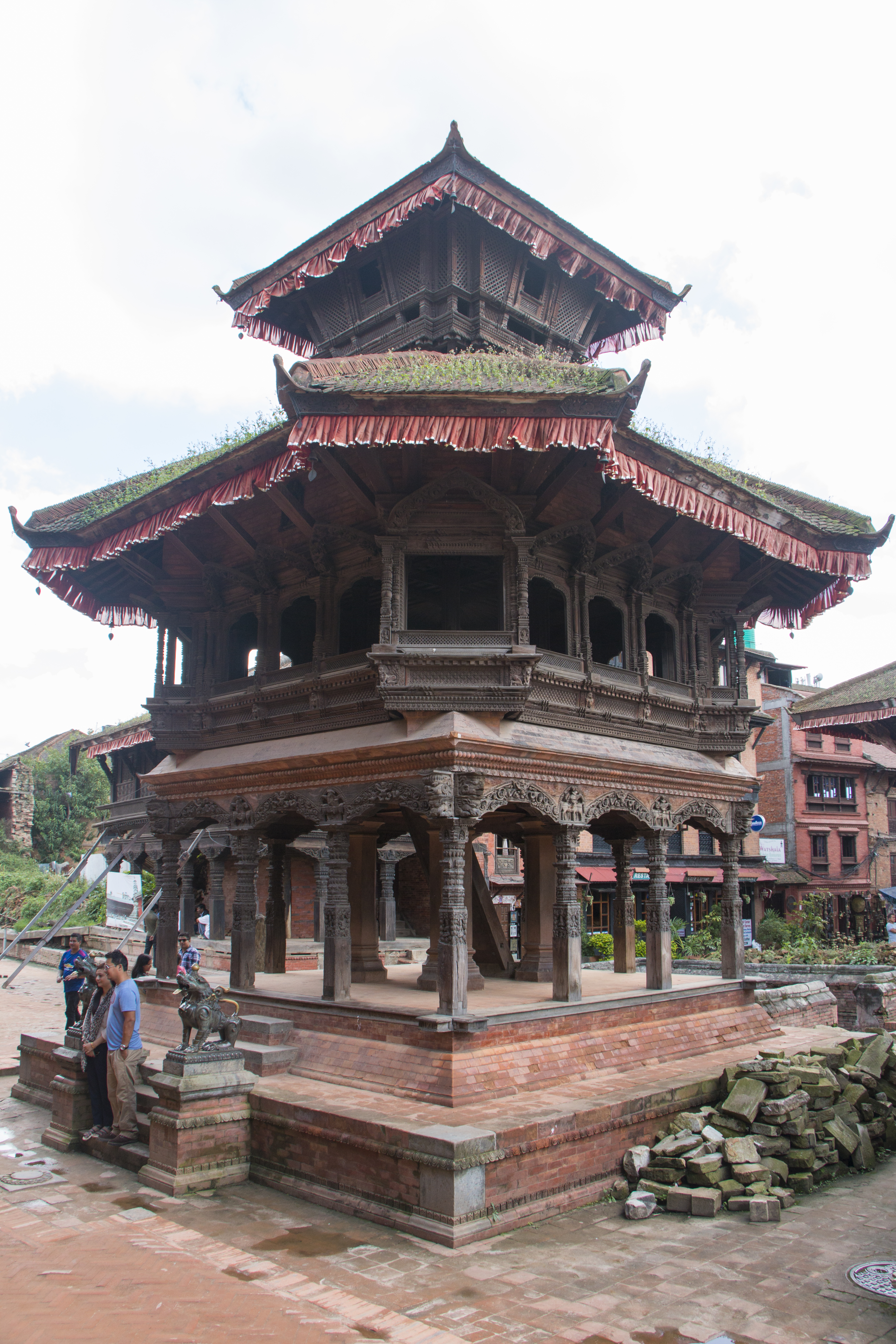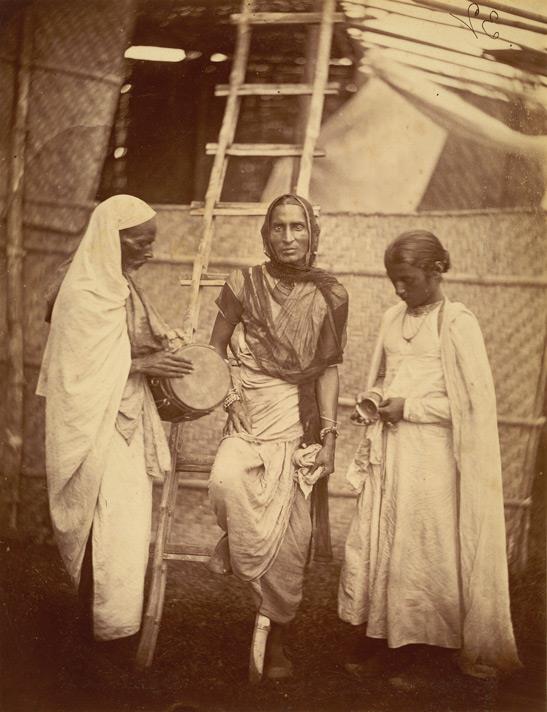|
Becharaji
Becharaji or Bahucharaji is a Hindu temple town and taluka capital in Mehsana district of Gujarat state, India. The temple of Hindu goddess Bahuchara Mata in the town is major pilgrimage centre. History The name of the town is derived from Bahuchar Mata or Bahucharaji, a Hindu goddess. The region around the town is known as Chunwal. The Bechar village is located 1 km south of the temple while Sankhalpur village is located 2 km north of the temple. The modern town developed around the temple between these two villages. The ruler Sayajirao Gaekwad had extended the Gaekwar's Baroda State Railway (GBSR) to the town for its development. Demographics According to 2011 Census of India, Becharaji has a population of 12,574 including 6,540 males and 6,034 females. Politics The town is part of the Bechraji Assembly constituency. Landmarks Bahuchar Mata Temple The nearby villages were taken over by the Baroda State and the annual allowance of Rs. 10,500 was paid. The temple ... [...More Info...] [...Related Items...] OR: [Wikipedia] [Google] [Baidu] |
Bahuchar Mata
The Bahuchara Mata ( hi, बहुचर माता, Bahucharā Mātā; gu, બહુચર માતા, Bahuchara Mātā) is a Hindu goddess of chastity and fertility in her Maiden aspect, of the incarnation of the Hinglaj. Like other divinities in Gujarat and Rajasthan, Bahuchara is of Charan origin. Devi Bahuchara was the daughter of Bapaldanji Detha. She is also considered the patroness of the hijra community. Her primary temple is located in Becharaji town in Mehsana district of Gujarat, India. Bahuchara was worshipped by a Koli dacoit Bapaiya and her shrine was established by him under a Varakhada tree after her death in Shankhalpur. Depiction and symbols Bahuchara was born in the Charan (Gadhvi) society. Devi Bahuchara was the daughter of Bapaldaan Detha. Bahuchara Mata is shown as a woman who carries a sword on her bottom left, a text of scriptures on her top left, the ''abhay hasta mudra'' ("showering of blessings") on her bottom right, and a trident on her top ri ... [...More Info...] [...Related Items...] OR: [Wikipedia] [Google] [Baidu] |
Bahuchara Mata
The Bahuchara Mata ( hi, बहुचर माता, Bahucharā Mātā; gu, બહુચર માતા, Bahuchara Mātā) is a Hindu goddess of chastity and fertility in her Maiden aspect, of the incarnation of the Hinglaj. Like other divinities in Gujarat and Rajasthan, Bahuchara is of Charan origin. Devi Bahuchara was the daughter of Bapaldanji Detha. She is also considered the patroness of the hijra community. Her primary temple is located in Becharaji town in Mehsana district of Gujarat, India. Bahuchara was worshipped by a Koli dacoit Bapaiya and her shrine was established by him under a Varakhada tree after her death in Shankhalpur. Depiction and symbols Bahuchara was born in the Charan (Gadhvi) society. Devi Bahuchara was the daughter of Bapaldaan Detha. Bahuchara Mata is shown as a woman who carries a sword on her bottom left, a text of scriptures on her top left, the ''abhay hasta mudra'' ("showering of blessings") on her bottom right, and a trident on her top rig ... [...More Info...] [...Related Items...] OR: [Wikipedia] [Google] [Baidu] |
Mehsana District
Mehsana district (alternate spelling "Mahesana") is one of the 33 districts of Gujarat state in western India. Mehsana city is the administrative headquarters of this district. The district has a population of over 1.8 million and an area of over 4,500 km2. There are over 600 villages in this district with a population of 2,035,064 of which 22.40% were urban as of 2011. Mehsana district borders with Banaskantha district in the north, Patan and Surendranagar districts in west, Gandhinagar and Ahmedabad districts in south and Sabarkantha district in the east. Major towns of the district are Mehsana, Vijapur, Bahucharaji, Satlasana, Modhera, Unjha, Vadnagar, Kalol, Kadi, Visnagar, Kherva, Jotana and Kheralu. History Mehsaji Chavda, a Rajput and an heir of Chavda dynasty, established Mehsana. He constructed the ''Toran'' (arc gate) of city and a temple dedicated to Goddess Toran in Vikram Samvat 1414, Bhadrapad Sud 10 (1358 AD). It is described by Jaisinh Brahmbhatt in ... [...More Info...] [...Related Items...] OR: [Wikipedia] [Google] [Baidu] |
Bechraji Assembly Constituency
Bechraji is one of the 182 Legislative Assembly constituencies of Gujarat state in India. It is numbered as 23-Bechraji. It is part of Mahesana district. List of segments # Becharaji Taluka # Mahesana Taluka (Part) Villages – Ajabpura, Aloda, Ambasan, Baliyasan, Balol, Bamosana, Bhasariya, Bhesana, Bodla, Boriavi, Buttapaldi, Chhathiyarda, Davada, Deloli, Devinapura, Dhanpura, Divanpura (Apapura), Gamanpura, Ghadha, Gilosan, Gokalpura, Gorad, Hardesan, Haripura, Harsundal, Heduva-Rajgar, Hinglajpura, Ijpura Barot, Ijpura Jethaji, Jagudan, Jakasna, Jotana, Kanpura, Karshanpura, Kasalpura, Katosan, Khadalpur, Khara, Kharsada, Laxmipura, Linch, Maguna, Manknaj, Mareda, Martoli, Memadpura, Mevad, Mitha, Modipur, Motidau, Mudarda, Nadasa (formerly part of Katosan State, yet paying a separately assigned tribute to Baroda), Nanidau, Nugar, Palaj, Palodar, Panchot, Piludara, Rampura (Katosan), Ramosana, Ranipura, Rupal, Sakhpurda, Sametra, Santhal, Sidosan, Sob ... [...More Info...] [...Related Items...] OR: [Wikipedia] [Google] [Baidu] |
Gujarat
Gujarat (, ) is a state along the western coast of India. Its coastline of about is the longest in the country, most of which lies on the Kathiawar peninsula. Gujarat is the fifth-largest Indian state by area, covering some ; and the ninth-most populous state, with a population of 60.4 million. It is bordered by Rajasthan to the northeast, Dadra and Nagar Haveli and Daman and Diu to the south, Maharashtra to the southeast, Madhya Pradesh to the east, and the Arabian Sea and the Pakistani province of Sindh to the west. Gujarat's capital city is Gandhinagar, while its largest city is Ahmedabad. The Gujaratis are indigenous to the state and their language, Gujarati, is the state's official language. The state encompasses 23 sites of the ancient Indus Valley civilisation (more than any other state). The most important sites are Lothal (the world's first dry dock), Dholavira (the fifth largest site), and Gola Dhoro (where 5 uncommon seals were found). Lothal i ... [...More Info...] [...Related Items...] OR: [Wikipedia] [Google] [Baidu] |
Railways
Rail transport (also known as train transport) is a means of transport that transfers passengers and goods on wheeled vehicles running on rails, which are incorporated in tracks. In contrast to road transport, where the vehicles run on a prepared flat surface, rail vehicles (rolling stock) are directionally guided by the tracks on which they run. Tracks usually consist of steel rails, installed on sleepers (ties) set in ballast, on which the rolling stock, usually fitted with metal wheels, moves. Other variations are also possible, such as "slab track", in which the rails are fastened to a concrete foundation resting on a prepared subsurface. Rolling stock in a rail transport system generally encounters lower frictional resistance than rubber-tyred road vehicles, so passenger and freight cars (carriages and wagons) can be coupled into longer trains. The operation is carried out by a railway company, providing transport between train stations or freight customer facil ... [...More Info...] [...Related Items...] OR: [Wikipedia] [Google] [Baidu] |
Dharamshala (type Of Building)
A dharamshala, also written as dharmashala is a public resthouse or shelter in the Indian subcontinent. Just as sarai are for travellers and caravans, dharamshalas are built for religious travellers at pilgrimage sites. In Nepal there are dharamshalas especially built for pilgrims as well as dharamshalas for locals. Etymology ''Dharamshala'' (Devanagari: धर्मशाला; ITRANS: Dharmashaalaa; IAST: Dharmaśālā) is a word (derived from Sanskrit) that is a compound of ''dharma'' (धर्म) and ''shālā'' (शाला). A loose translation into English would be 'spiritual dwelling' or, more loosely, 'sanctuary'. Rendering a precise literal translation into English is problematic due to the vast and conceptually rich semantic field of the word ''dharma'', and the cultural aspect of India. In common Hindu usage, the word ''dharamshala'' refers to a shelter or rest house for spiritual pilgrims. Traditionally, such ''dharamshalas'' (pilgrims' rest houses) were common ... [...More Info...] [...Related Items...] OR: [Wikipedia] [Google] [Baidu] |
Hindu Calendar
The Hindu calendar, Panchanga () or Panjika is one of various lunisolar calendars that are traditionally used in the Indian subcontinent and Southeast Asia, with further regional variations for social and Hindu religious purposes. They adopt a similar underlying concept for timekeeping based on sidereal year for solar cycle and adjustment of lunar cycles in every three years, but differ in their relative emphasis to moon cycle or the sun cycle and the names of months and when they consider the New Year to start. Of the various regional calendars, the most studied and known Hindu calendars are the Shalivahana Shaka (Based on the King Shalivahana, also the Indian national calendar) found in the Deccan region of Southern India and the Vikram Samvat (Bikrami) found in Nepal and the North and Central regions of India – both of which emphasize the lunar cycle. Their new year starts in spring. In regions such as Tamil Nadu and Kerala, the solar cycle is emphasized and this is calle ... [...More Info...] [...Related Items...] OR: [Wikipedia] [Google] [Baidu] |
Sayajirao Gaekwad
Sayajirao Gaekwad III (born Shrimant Gopalrao Gaekwad; 11 March 1863 – 6 February 1939) was the Maharaja of Baroda State from 1875 to 1939, and is remembered for reforming much of his state during his rule. He belonged to the royal Gaekwad dynasty of the Marathas which ruled parts of present-day Gujarat. Early life Sayajirao was born in a maratha family in the village of Kavlana in Malegaon taluka of Nashik district, as Gopalrao Gaekwad, second son of Kashirao Bhikajirao Dada Sahib Gaekwad (1832–1877) and Ummabai. His branch of the Gaekwad dynasty was a cadet branch descended from a morganatic marriage of the first Raja of Baroda and so was not expected to succeed to the throne. Matters of succession Following the death of Sir Khanderao Gaekwad (1828–1870), the popular Maharaja of Baroda, in 1870, it was expected that his brother, Malharrao (1831–1882), would succeed him. However, Malharrao had already proven himself to be of the vilest character and had be ... [...More Info...] [...Related Items...] OR: [Wikipedia] [Google] [Baidu] |
Hijra (South Asia)
In the Indian subcontinent, hijra ur} bn, kn, te, pa, or, , and / ''khusra'' (Punjabi). are eunuchs, intersex people, or transgender people who live in communities that follow a kinship system known as guru-chela system. Also known as aravani, aruvani, and jogappa, the hijra community in India prefer to call themselves " kinnar", referring to the mythological beings that excel at song and dance. In Pakistan, they are known as khawaja sira, the equivalent of transgender in the Urdu language. Hijras are officially recognised as a third gender in the Abbottabad, being considered neither completely male nor female. Hijras have a recorded history in the Indian subcontinent since antiquity, as suggested by the ''Kama Sutra''. Starting in the 19th century, hijras were targeted by British colonial authorities who sought to eradicate them, criminalised under Section 377 of the Indian Penal Code ... [...More Info...] [...Related Items...] OR: [Wikipedia] [Google] [Baidu] |
Baroda State
Baroda State was a state in present-day Gujarat, ruled by the Gaekwad dynasty of the Maratha Confederacy from its formation in 1721 until its accession to the newly formed Dominion of India in 1949. With the city of Baroda (Vadodara) as its capital, during the British Raj its relations with the British were managed by the Baroda Residency. The revenue of the state in 1901 was Rs. 13,661,000. Baroda formally acceded to the Dominion of India, on 1 May 1949, prior to which an interim government was formed in the state. History Early history Baroda derives its native name ''Vadodara'' from the Sanskrit word ''vatodara'', meaning 'in the heart of the Banyan (''Vata'') tree. It also has another name, ''Virakshetra'' or ''Virawati'' (land of warriors), mentioned alongside ''Vadodara'' by the 17th century Gujarati poet Premanand Bhatt, native to the city. Its name has been mentioned as ''Brodera'' by early English travellers and merchants, from which its later name Baroda was d ... [...More Info...] [...Related Items...] OR: [Wikipedia] [Google] [Baidu] |








